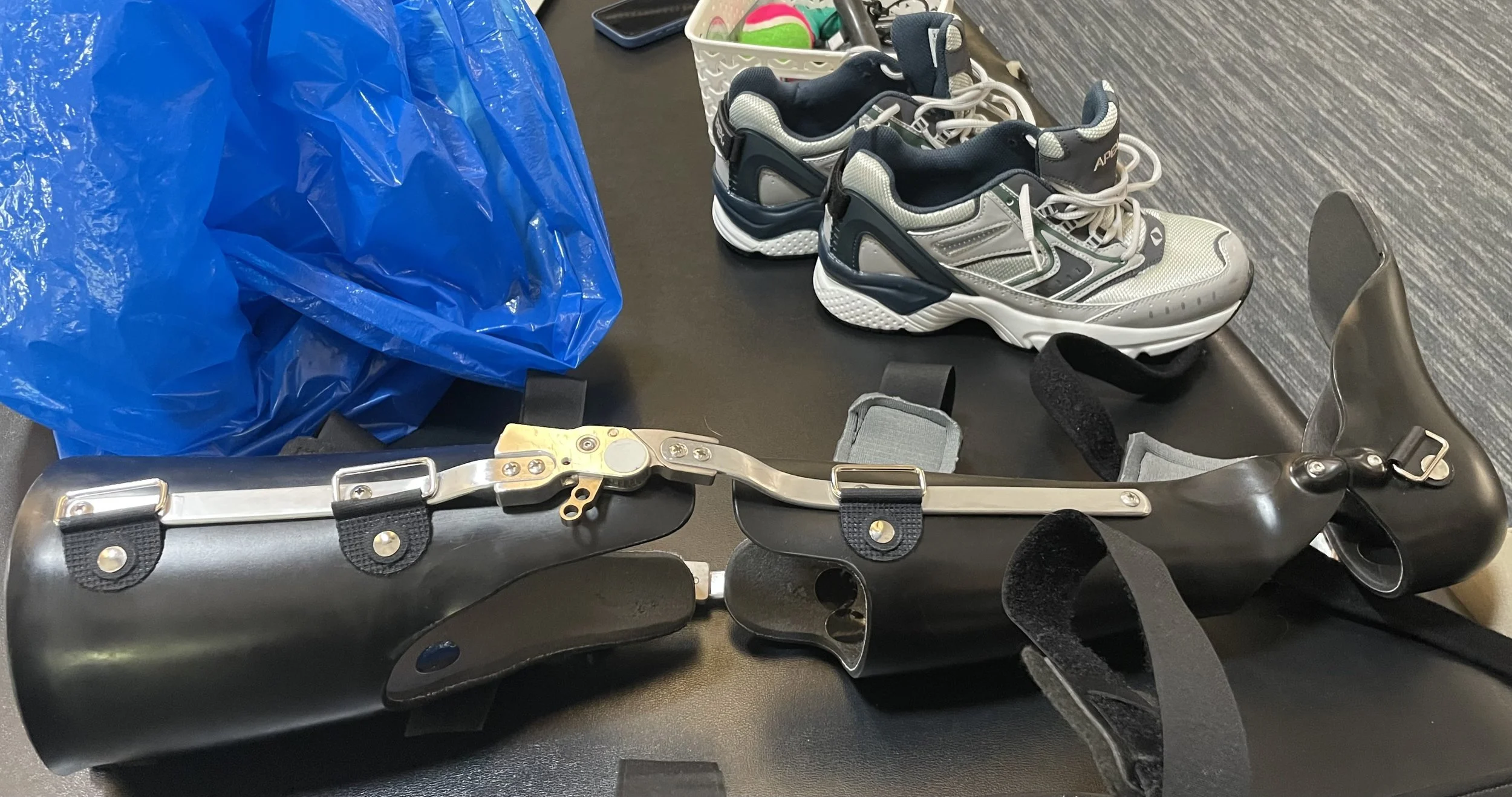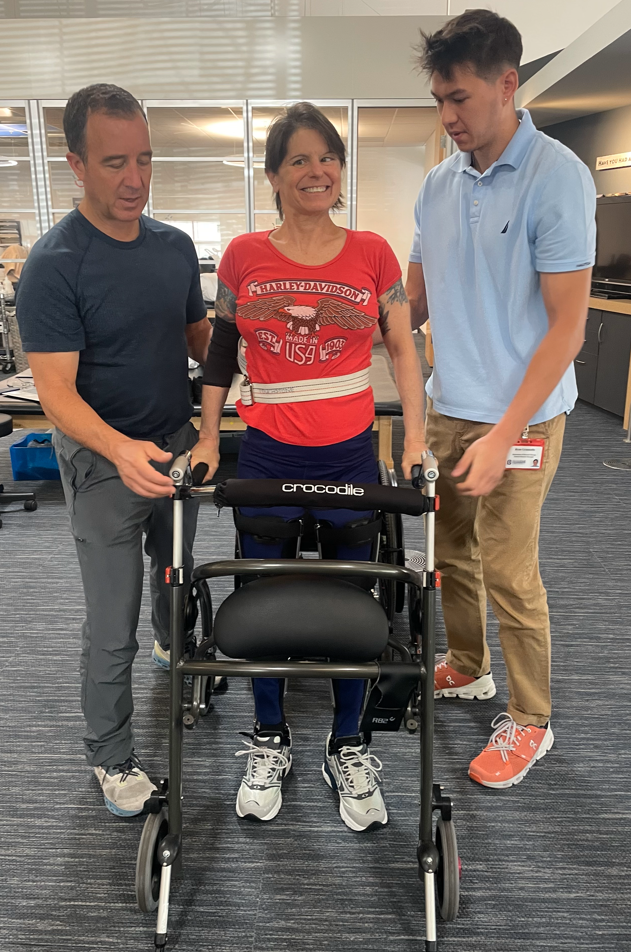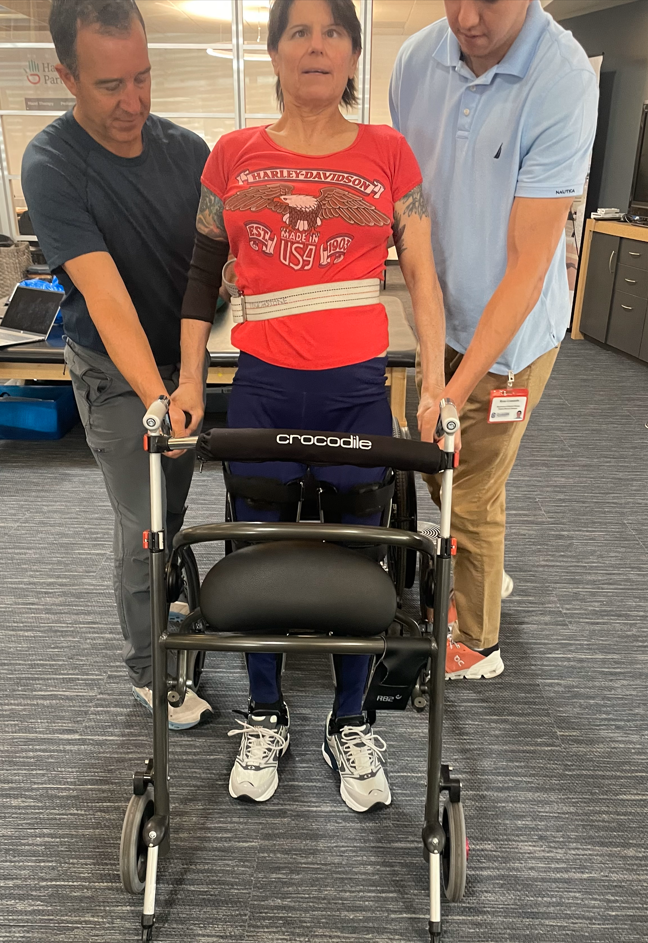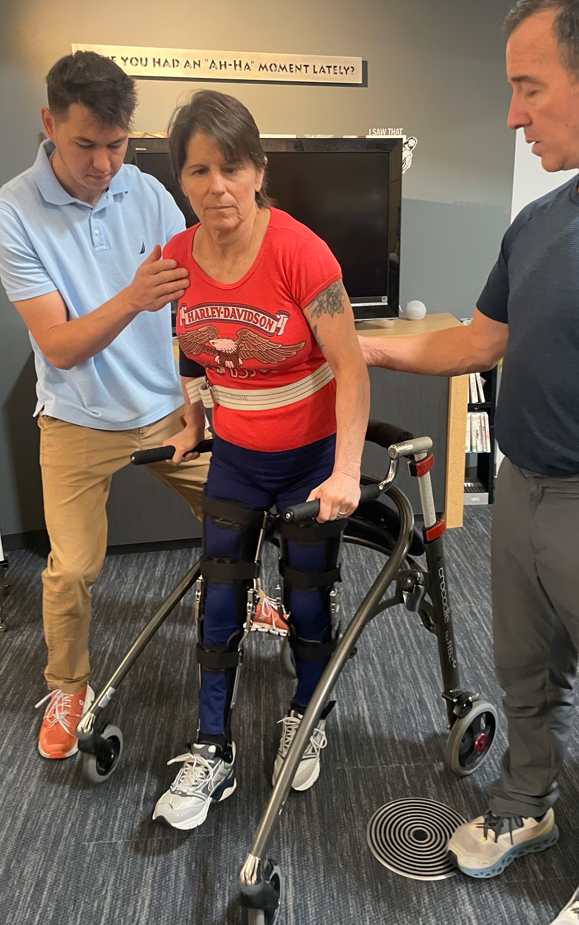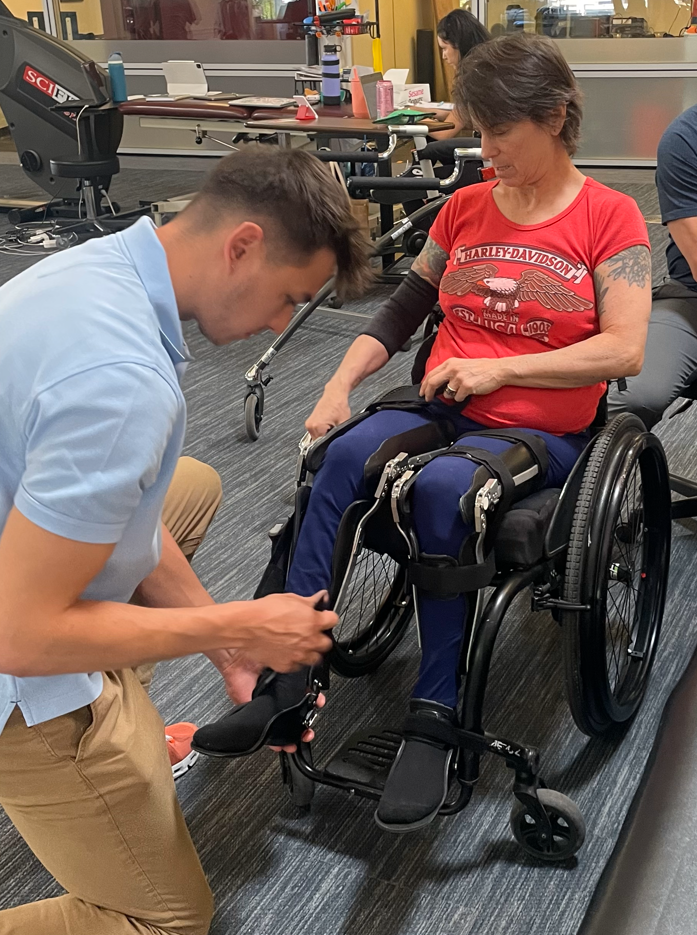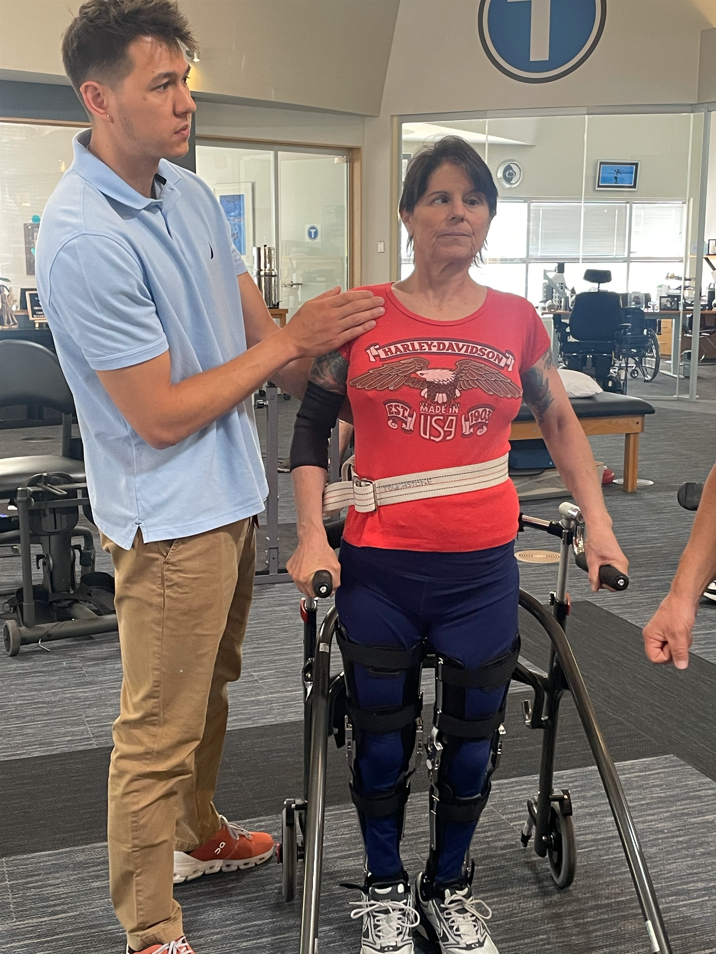What are Knee Ankle Foot Orthotics and How Do They Help Celeste?
Knee Ankle Foot Orthotics (KAFOs, pronounced Kay-ef-ohs) is a long-leg brace that provides support and control to the knee, ankle and foot. Essentially, it helps Celeste stand and move with support of a walker or parallel bars.
But how?
The process began in January when Celeste got fitted for leg casts. These casts are the base for her custom orthotics, which span from her feet to the top of her thigh. Just two months later, Celeste tried them on for the first time, standing and moving on her own using the parallel bars!
However, KAFOs are more than just the casts Celeste had custom-made. There are five main components.
Rigid frame: This is the main structural component, typically made of lightweight materials like carbon fiber or thermoplastic. The frame is designed to provide stability and support to the knee, ankle and foot. Celeste’s is made of thermoplastic and the metal parts are stainless steel. After practicing with them a few times, Celeste returned them to the manufacturer, Hanger Clinic, for fine-tuning. The Hanger clinician heated the thermoplastic and adjusted a few tight spots for a better fit.
Padding: The rigid thermoplastic frame is completely lined with a layer of foam padding. This is essential for comfort, proper fit, and prevent pressure sores, which are localized injuries to the skin and underlying tissue caused by prolonged pressure, often over bony areas.
Knee joint: KAFOs often have a knee joint, which can be either free-moving, locked, or automatic, depending on the individual’s needs and the specific design. Celeste’s knee joints are ratcheting joints. When the lever is up, the joint is loose, free swinging. When the lever is down, the knee will not bend. The knee will straighten with a ratcheting action that locks at each notch. This allows the leg to straighten without allowing it to bend.
Ankle control: This part of the KAFO provides control over ankle movement, often including a mechanism to prevent foot drop or provide assistance during the swing phase of gait. Celeste’s ankle controls are designed to be fixed or have varying flexibility. The screws can be loosened or tightened to adjust how flexible or tight the ankle is. Celeste prefers hers to be tighter to provide more stability.
Foot and ankle support: The foot portion of the KAFO may include an ankle-foot orthotic (AFO) component to provide further support and control to the ankle and foot. Celeste’s ankle joint has varying flexibility. She also wears a special shoe designed to fit over the foot portion of the frame. They have a split and adjustable rear ankle, which helps get them on and off easily.
All of these different components help Celeste do several things in the KAFOs that contribute to her healing process.
Practicing moving back and forth on the parallel bars.
Traveling using the pull-behind walker. An intern at Touchstone Rehabilitation helps Celeste put on the KAFOs while her physical therapist, Dan supervises. She stands up in the walker, then turns around so it is behind her. Celeste uses her triceps and core to push and twist to turn around in the walker, positioning it behind her so she can pull it along. The exercise strengthens her core and she gains power from her lats as she pushes up and uses her abs to tuck her hips and swing her legs forward. Celeste’s upper body muscles work together to stabilize herself; while standing still, Celeste practices balancing, feeling the weight of her body through her feet into the floor. All of these things are important to keeping her internal gyroscope active and alert. The ability to balance naturally is quickly lost if not utilized while living seated. She can’t take steps one leg at a time yet, so she lifts her body with her arms and core and swings her legs forward. Once she lands, Celeste pulls the walker from behind while thrusting her chest and hips forward, rolling her shoulders back and down to regain a split second of standing balance before pushing up again with her arms to swing her legs forward again.
Going from sitting to standing, then standing still. Celeste will hold her balance while taking turns raising one hand and then the other. Sometimes she can raise both of her hands for up to three seconds!
Other than allowing Celeste to stand and move on her own with great effort, KAFOs also reduce Celeste’s muscle spasms. Spasms occur when muscles below her injury try to send signals, but the injury blocks them from reaching her brain. This causes the muscles to be confused and flex without control in an attempt to protect the area. Stronger muscles have stronger spasms, but the more Celeste moves and keeps blood flowing, it reduces her spasms. Being upright in the KAFOs is good for Celeste’s bones because it helps maintain their strength by bearing the weight of her body. Standing and moving are good for all the systems of Celeste’s body, promoting healthy blood pressure and preventing stagnation issues. Celeste also likes to focus on the feeling of the ground supporting her body.
Celeste uses her KAFOs twice a week with help from the therapists at Touchstone Rehabilitation. Since Celeste still has no feeling from her hips down, practicing with the KAFOs is a challenging total body workout. She is working toward relearning to take steps one leg at a time soon!
Look at Celeste’s progress!





